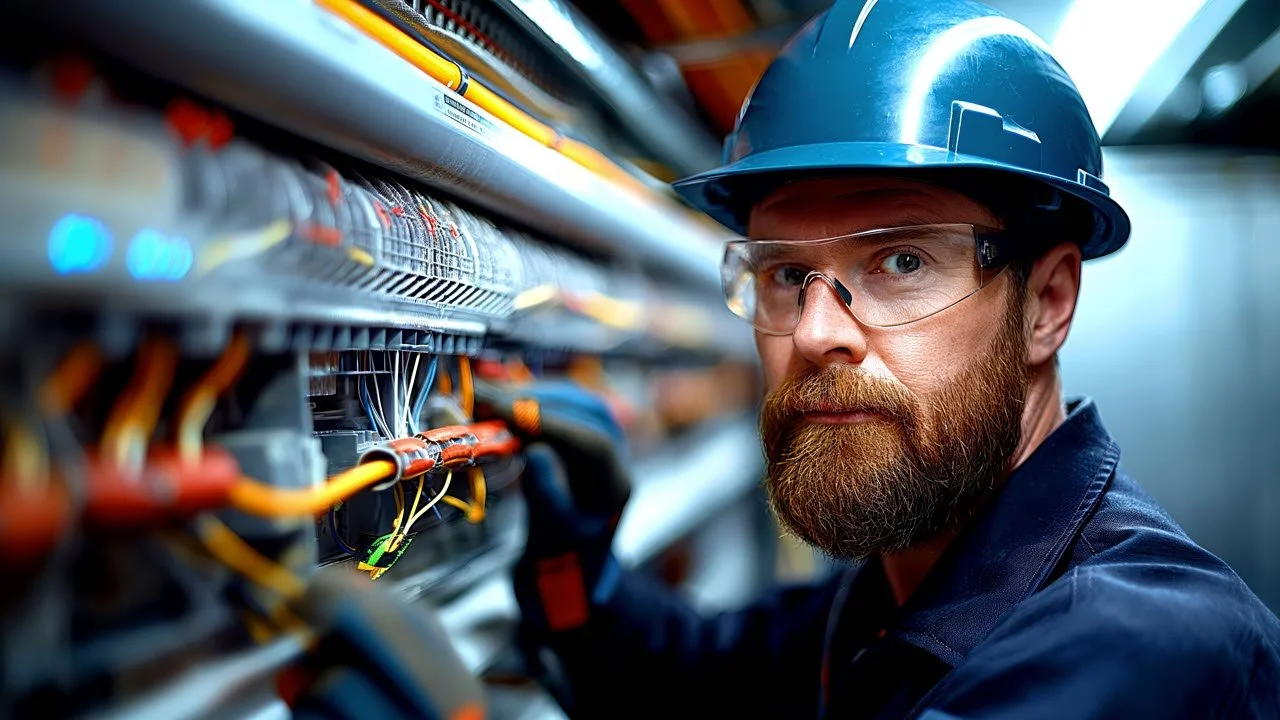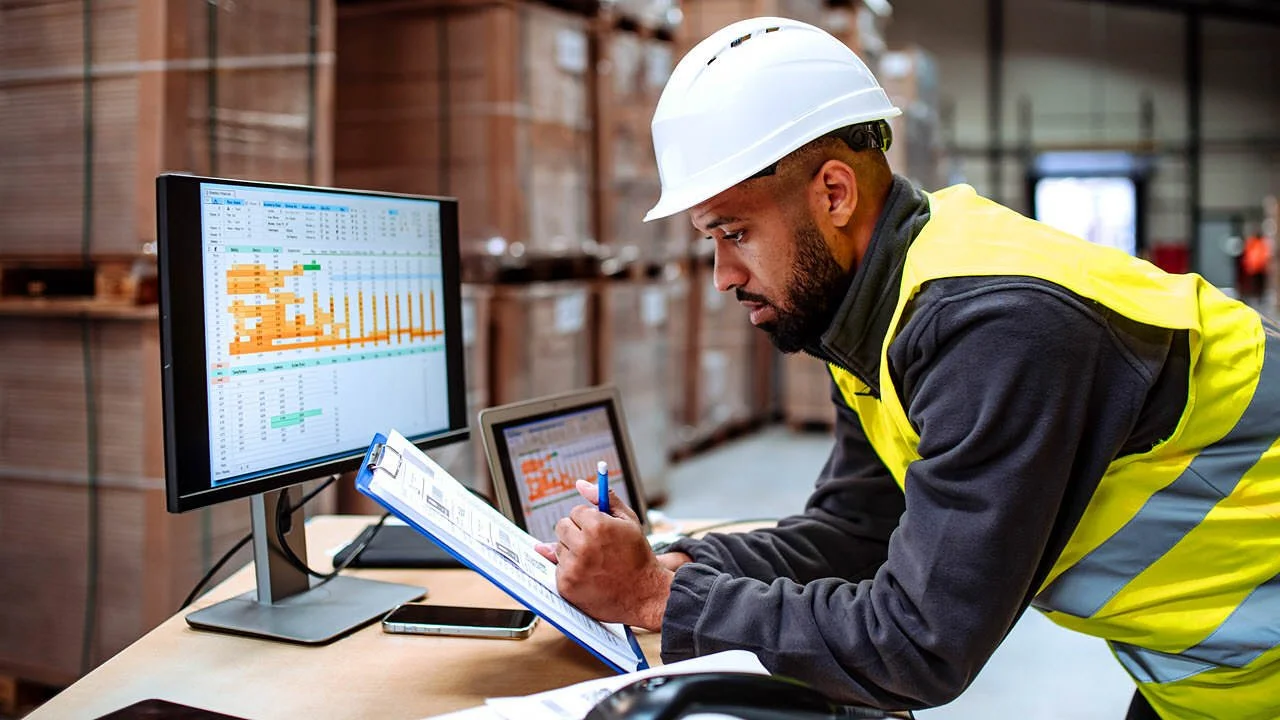AI Safety Agents: Pedestrian Detection Systems for Forklift and Workplace Safety
How Agentic AI Technology Goes Beyond Alerts to Take Real-Time Safety Actions
Picture this: Your forklift doesn't just detect a pedestrian—it becomes an intelligent safety agent that predicts their path, automatically adjusts operations, and coordinates with other equipment to prevent incidents before they happen. This is the power of AI Safety Agents and agentic pedestrian detection systems that are revolutionizing industrial workplaces.
Traditional safety systems are passive observers. AI Safety Agents are active participants in your safety ecosystem—autonomous systems that don't just monitor, but think, predict, and act.
In simple terms, an AI Safety Agent is a self-learning digital co-worker—an autonomous system that perceives its surroundings, predicts risk, and takes protective action without waiting for human input.
Understanding AI Safety Agents: From Passive Detection to Active Protection
What Makes a Safety System "Agentic"?
An AI Safety Agent isn't just another sensor or camera system. It's an autonomous entity that:
Perceives its environment through 360° vision systems
Analyzes complex scenarios in real-time
Decides on appropriate safety interventions
Acts independently to prevent incidents
Learns from every interaction to improve performance
This shift from reactive alerts to proactive agents represents the most significant advancement in forklift pedestrian safety systems in decades.
The Architecture of Autonomous Safety Agents
Multi-Agent Coordination
Modern agentic AI-powered workplace safety deploys multiple intelligent agents that work in concert:
Equipment Agents: Each forklift becomes an autonomous safety agent with 360° coverage using multiple cameras, creating a comprehensive understanding of its environment.
Zone Agents: Virtual agents monitor specific areas, managing customizable alert zones and coordinating between multiple pieces of equipment.
Supervisor Agents: High-level agents analyze patterns across your entire operation, providing cloud-based analytics and reporting to identify systemic risks.
Real-Time Decision Making
These AI pedestrian detection agents make thousands of micro-decisions per second:
Is that pedestrian's trajectory intersecting with the forklift's path?
Should the alert level escalate based on operator response time?
Are there alternative routes that maintain productivity while enhancing safety?
Should nearby equipment be notified of a developing situation?
The in-cab screen shows pedestrian distance and position not as raw data, but as processed intelligence from the agent's analysis—actionable insights that help operators make better decisions.
Autonomous Capabilities That Define Next-Gen Forklift Safety Systems
Predictive Intervention Agents
Collision-avoidance technology powered by AI Safety Agents doesn’t wait for danger—it anticipates and prevents it through predictive intelligence. These agents minimize human error with predictive alerts by:
Analyzing historical near-miss patterns
Identifying operator fatigue indicators
Predicting pedestrian behavior based on movement patterns
Automatically adjusting safety parameters during high-risk periods
Self-Configuring Safety Nets
Unlike static safety systems, agentic solutions create virtual safety nets for operators and pedestrians that adapt autonomously:
Agents automatically expand safety zones during shift changes when foot traffic increases. This means protection dynamically scales with real activity levels instead of static presets.
They tighten parameters in blind-spot areas identified through incident analysis.
They learn facility-specific patterns and adjust accordingly.
Zero-Infrastructure Intelligence
The revolutionary aspect of agentic systems? No tags or high-visibility vests required. The AI agents recognize and track humans through advanced computer vision, treating every person as a protected entity automatically.
This autonomous identification means:
Instant protection for anyone entering your facility
No human intervention needed for safety activation
Complete autonomous coverage without manual oversight
How AI Safety Agents Transform Operations
Distributed Intelligence Network
Each safety agent doesn't work in isolation. Through integration with fleet telematics, agents share intelligence across your entire operation:
Local Agent Actions:
Immediate audible and visual alerts based on proximity and risk assessment
Dynamic speed governance when pedestrians are detected
Automatic incident logging and classification
Network Agent Coordination:
Cross-equipment communication to prevent chain-reaction incidents
Facility-wide pattern recognition and risk prediction
Automated safety briefings based on emerging trends
Autonomous Compliance Management
Safety compliance monitoring becomes an automatic function of the agent network:
Agents autonomously document every safety-relevant event
They generate compliance reports without human intervention
They identify and flag compliance gaps in real-time
They provide enhanced situational awareness to EHS teams
The Agentic Advantage: Measurable Outcomes
Agent Performance Metrics
Organizations deploying AI Safety Agents report:
75 % reduction in pedestrian-forklift incidents within six months
50 % decrease in near-miss events through predictive intervention
90 % improvement in incident response time
Zero undetected pedestrian entries in protected zones
35 % reduction in operational slowdowns due to smart alert management
Continuous Learning and Adaptation
Unlike static systems, AI Safety Agents improve over time:
Each agent learns from millions of interactions across the network
They adapt to seasonal variations, shift patterns, and operational changes
They identify and accommodate individual operator behaviors
They evolve their predictive models based on actual outcomes
Implementing Your AI Safety Agent Network
Phase 1 – Agent Deployment Foundation (Weeks 1-3)
Install base infrastructure, deploy the perception layer, establish communication protocols, and configure baseline autonomous behaviors.
Phase 2 – Agent Training and Calibration (Weeks 4-6)
Allow agents to learn your environment, fine-tune predictive models, and validate autonomous decision-making.
Phase 3 – Autonomous Operations (Weeks 7-12)
Activate full agent autonomy, enable cross-agent learning, and implement predictive intervention protocols.
Phase 4 – Network Intelligence Optimization (Ongoing)
Leverage collective learning, expand autonomous capabilities, and scale insights across multiple facilities.
The Business Case for Agentic Safety
Autonomous Value Creation — AI Safety Agents do more than prevent incidents; they continuously optimize operations by combining safety data with productivity analytics:
Predictive Maintenance: Identify equipment issues before they create safety risks.
Workflow Optimization: Suggest safer, more efficient traffic patterns.
Training Intelligence: Detect skill gaps and recommend targeted training.
Insurance Advantages: Documented autonomous safety measures often qualify for premium reductions.
Why “Agentic” Matters for Modern EHS
The difference between traditional proximity-detection systems and AI Safety Agents isn't incremental—it's transformational:
Traditional Systems: React to proximity → Sound alarm → Hope for human response
AI Safety Agents: Predict risk → Evaluate options → Take autonomous action → Learn from outcome → Prevent recurrence
This shift from human-dependent to autonomous safety defines the future of industrial EHS.
Real-World Agent Deployments
Distribution Center Case Study:
A major logistics provider deployed AI Safety Agents across 50 forklifts. Within four months, the agent network had:
Prevented 200+ potential collisions
Reduced safety-related delays by 40 %
Achieved 100 % visitor protection without manual intervention
Delivered ROI through incident prevention and insurance savings
Manufacturing Facility Success:
An automotive parts manufacturer’s agent network:
Manages safety for 100+ pieces of mobile equipment
Coordinates safety zones across 500,000 sq ft
Adapts automatically to three shift patterns
Maintains zero lost-time incidents for 18 months
The Riodatos Approach to AI Safety Agents
As specialists in agentic safety solutions, Riodatos doesn’t just install technology—we deploy intelligent, autonomous safety ecosystems. Our AI Safety Agents are:
Vendor-Neutral: We select the best agentic platforms for each client.
Fully Autonomous: Agents operate independently while remaining under your control.
Continuously Learning: Every deployment improves through network intelligence.
Scalable: From single facilities to global operations.
The Future Is Autonomous
AI Safety Agents represent more than an upgrade—they redefine workplace safety itself. These autonomous systems don’t just watch your workplace; they actively protect it, learn from it, and continuously improve it.
Every day without AI Safety Agents means depending on human reaction time instead of AI prediction. Contact Riodatos today to deploy an autonomous safety agent network that protects, learns, and evolves with your operation.
Riodatos specializes in AI Safety Agents and agentic pedestrian-detection systems that transform workplace safety through autonomous, intelligent action. Our AI-powered safety agents don't just detect—they predict, prevent, and protect.
🚀 AI Safety Agents Are Redefining Forklift Safety
Traditional safety systems react — AI Safety Agents predict and act.
Imagine forklifts and mobile equipment that don’t just issue alerts—they think ahead, coordinate, and prevent incidents autonomously.
👉 Read the full article here: [link to your blog post]
✅ 360° AI pedestrian detection
✅ Predictive collision avoidance
✅ No tags or high-vis vests required
✅ Cloud analytics + self-learning safety agents
✅ Proven reductions in incidents and near-misses
These are Agentic AI Systems—the next evolution in EHS technology.
At Riodatos, we integrate AI Safety Agents that protect, learn, and continuously improve.
#ForkliftSafety #PedestrianDetection #WorkplaceSafety #AIPoweredSafety #CollisionAvoidance #EHS #SmartFactory #IndustrialSafety #AIforSafety #SafetyTechnology






